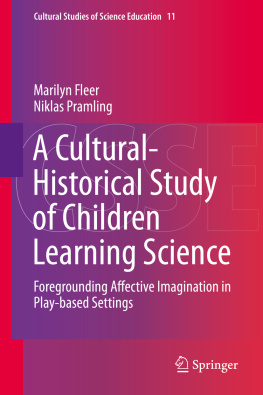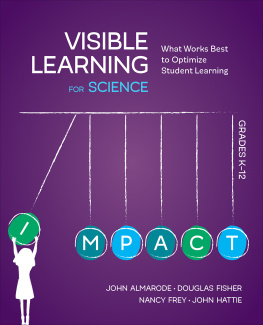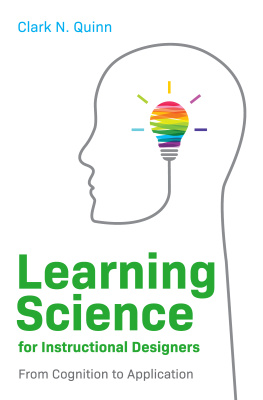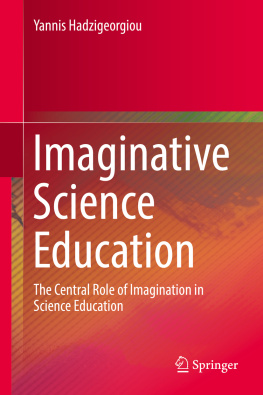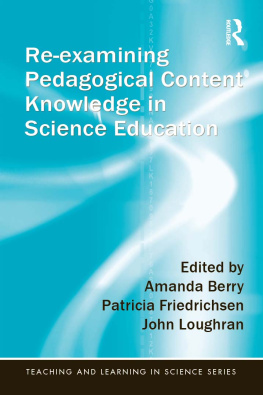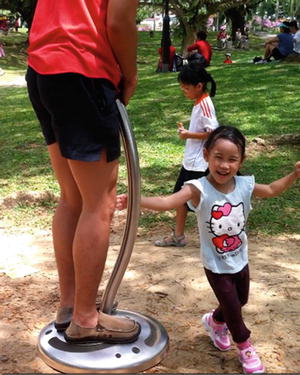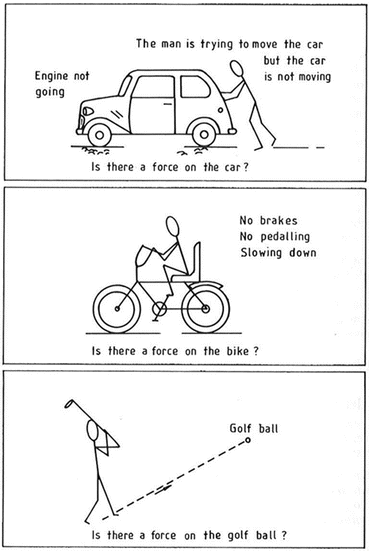1.1 Introduction: Our Historical Legacy
Sophia (6 years) was at park with her grandparents, two uncles and Chistina (teacher). She led Uncle JJ and Christine to a spinning piece of equipment that she discovered earlier. She sat on it and requested Uncle JJ to spin her.
Christine:
How should Uncle JJ do it?
JJ:
You should know how to spin it yourself
JJ:
Yes hold on tight (started to spin her) (Sophia grabbed on tightly to the pole)
JJ:
Later youll be very giddy you know
Sophie:
Dont worry! (which also means: you can spin fast; I can handle it),(Uncle JJ turned the knob fast and Sophia squealed with excitement)
JJ:
Giddy already Slow The other way
Sophia:
Faster, faster, faster!
Christine:
Is your head spinning too?
Sophia:
No, but the wheel is
Sophia:
Faster and faster (squealed with excitement again)
Sophia stood up and next was Uncle JJs turn. He stood on the spinning equipment. Sophia held on to it with one hand and ran. She gave it a push and observed how it continued to spin without her holding on to it. He squatted down and the equipment slowed down. He exclaimed, stop! She helped by using her arm and body strength to bring him to a complete stop (Fleer & Hoban, ).
According to longstanding research in science education, very young childrens everyday practical experiences of forces have been learned intuitively within specific everyday contexts, such as when Sophia is playing in the park and stops her uncle from continuing to spin (as shown in Fig. ). This chapter and the next, pave the way for this cultural-historical understanding of science learning by critiquing the existing literature and discussing those theoretical concepts thought important for the conceptual development of young children.
Fig. 1.1
Everyday understandings about force learned in the park
This chapter begins with a cultural-historical analysis of the longstanding science education research literature so that we better understand the research backdrop that has brought us to this point in time. We begin by an analysis of what is known about childrens thinking in science, followed by a critique of the tools that have generated this body of knowledge over the past 30 years. All contemporary research contexts are laced with historically informed practices that contribute to how we currently enact and conceptualise early childhood science research. However, our analysis asks different kinds of questions about the nature of science learning than previous literature reviews because we are interested in determining the conceptual essence of very young childrens learning and development in science as a collective endeavour. Our unit of analysis seeks to find the smallest cell that makes the biggest difference to young childrens conceptual development (Davydov, ). We critique the concept of childrens science because this work is still prevalent in early childhood science education, and its traces are still keenly felt. Later in this chapter we re-theorise this literature and the tools in relation to cultural-historical concepts.
1.2 Childrens Science
Piagets early work was instrumental in influencing a number of key researchers within the science education community by drawing attention to the explanations children give to natural phenomenon. As is well known, Inhelder and Piaget () made particular kinds of naturalistic observations, and undertook specific conservation tasks, presenting the education community with particular types of interpretations. Some examples are presented, re-analysed and discussed in subsequent chapters.
What is particularly important for the focus of this book is how these ideas were taken up in the science education community in the late 1970s and early 1980s (see Driver, Guesne, & Tiberghien, , p. 43). Interviewers were initially puzzled by comments made, such as when a 9 year old was asked about if there is a force on the car, she replied: No I dont think so because he is not forcing the carthe car wont move, it would be too heavyhe would be arguing at the car, kicking itthen he would probably start walkinghe would do a force, if it was a brand new cartry and save his car instead of leaving it out (p. 43). Noting the human aspect of the childrens responses, as this 9-year-old has conceptualised, is central to understanding the comments children give in these contrived interview situations. Analyses at the time linked childrens comments mostly to historical periods in which particular worldviews about the concepts were prevalent, for example, in physics, thinking from scientists, such as, Einstein, Newton and Buridan, who all had different theoretical explanations for the concept of force . For example:
Fig. 1.2
Interview-about-incident (force) cards
Newtonian interpretation: (Is there a force on the bike?: Yesbecause something is trying to slow it down.because something is pushing it the other way so it slows down (9 year old).
Buridanian interpretation: (Is there a force on the golf ball?: The force from when he hit it is still in it (13 year old).
Analyses of childrens responses needed to broaden as more studies were undertaken, where findings noted how children associated force with an emotional state, like anger or feelings, and as something that makes an object move, rather than causing a change in motion. Here, coercion, or physical movement, or muscular strength were common explanations given by young children as mentioned in the spinning example of Sophia playing in the park. Frequently, children associated force with the object itself as residing in the object (Buridanian interpretation), or as something that keeps an object moving. Importantly, the early research collectively showed that children generally only considered force in relation to the motion of an object and do not give thought to the equal forces that are acting to keep an object motionless (e.g., equilibrium situations).

